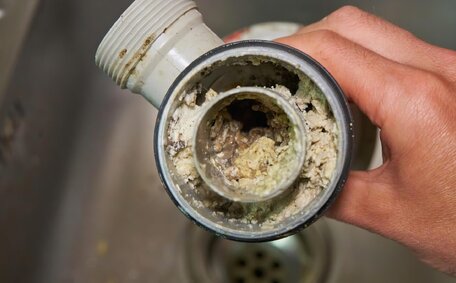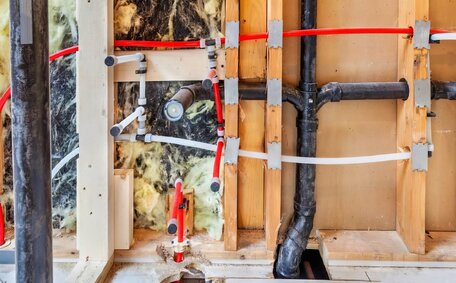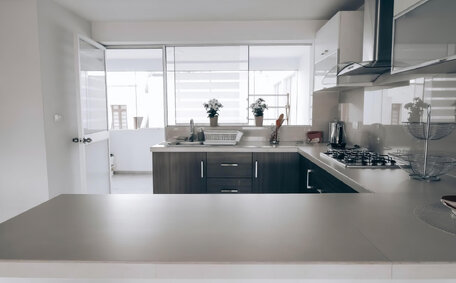Types of gas heaters for indoor use
Various types of gas heaters are designed to meet energy safety standards for indoor use:
Vented (Flued) Gas Heaters
Flued gas heaters manage carbon monoxide emissions, ensuring their suitability for indoor use. The ducting expels emissions like carbon monoxide outside, maintaining indoor air quality. They are considered heaters safe for indoor use, with managed levels of carbon monoxide (CO).
Examples include:
- Central heating systems which can warm up using natural gas
- Ducted gas heating units
- Freestanding gas space heaters efficiently warm indoor spaces.
Unvented (Unflued) Gas Heaters
Unflued gas heaters do not vent emissions outside and instead depend on room ventilation. They rely on indoor air circulation to disperse emissions. All Unflued gas appliances necessitate diligent management of indoor air flow to safely disperse emissions. Types include:
- Portable gas lpg heaters
- Gas log fires
- Some gas wall furnaces
Proper ventilation, such as opening a window, is critical when using any gas heater to prevent unsafe levels of carbon monoxide.
How gas heaters work and associated risks
Gas heaters, such as outdoor and patio models, utilise natural gas, LPG, or propane to produce heat. Using gas heaters results in byproducts such as carbon monoxide, nitrogen dioxide, and carbon dioxide, which can affect indoor air quality.
Unflued gas heaters, often paired with gas cooking appliances and abiding by Safe Victoria standards, convert gases into less harmful emissions. Consult a professional if an unflued gas heater exhibits efficiency loss or stability issues. Issues like incorrect gas pressure, blockages, or poor ventilation can cause dangerous carbon monoxide to accumulate.
Key risks of indoor gas heaters
The risks of using a faulty gas heater, such as an unflued or inadequately ventilated model, vary based on usage conditions:
- Carbon monoxide poisoning can be deadly indoors, compounded by the gas being odourless and colourless. Low levels from heaters, which can go unnoticed, can cause carbon monoxide poisoning with flu-like symptoms.
- Oxygen depletion - Gas heaters consume oxygen in closed spaces, with symptoms like dizziness or nausea serving as early warning signs.
- Respiratory issues - Nitrogen dioxide Exposure aggravates conditions like childhood asthma.
- Explosion/fire hazards - Gas leaks, damage, or flammable materials, which means a heightened risk, near the heater can ignite and cause house fires.
Maintaining gas appliances, including heaters, according to manufacturer instructions is crucial for safety and appliance longevity. It’s crucial to install a carbon monoxide alarm, avoid obstructing heaters, ensure proper airflow, and have annual heater servicing.
Carbon monoxide dangers
Carbon monoxide (CO) is an odourless, colourless and toxic gas. It’s produced whenever fuels like those in a gas appliance, oil, kerosene, wood or charcoal are burned. heating appliance options that are years old and fueled by this type of gas can release CO if they are faulty, improperly ventilated, or used in confined indoor spaces.
CO is a dangerous gas that can bind to blood cells more readily than oxygen, leading to health risks despite being odourless and invisible. Awareness of carbon monoxide’s health risks is crucial because even low levels can deprive organs of oxygen over time. Exposure to high levels of carbon monoxide can rapidly affect the body—even within minutes—which can result in fatal consequences.
- Low-level symptoms from elevated levels of carbon include headaches, dizziness, weakness, an upset stomach, vomiting, and chest pain.
- Higher exposures cause confusion, blurred vision, loss of consciousness, coma, seizures and death.
Indoor gas heaters sold in Australia have oxygen depletion sensors that automatically shut the heater off before dangerous CO levels occur. But it’s still vital to have working CO alarms in homes with gas appliances. Getting symptoms like headaches despite ventilation issues may indicate a problem when you use your heater.
CO poisoning sends thousands of Australians to emergency rooms yearly and claims more than 50 lives. Understanding CO risks, as well as proper guidelines for using gas heaters indoors and CO alarm installation, can prevent occurrences that might harm your health and avert tragedy.
Other pollution concerns
Besides carbon monoxide, Understanding how to operate your gas heater indoors can help prevent the release of harmful pollutants like nitrogen dioxide. Nitrogen dioxide is produced when natural gas or LPG burns at high temperatures. Exposure aggravates respiratory conditions like asthma or causes new issues over time.
Indoor gas heaters meeting Australian standards are designed to minimise nitrogen dioxide emissions. In contrast to electric heaters, leakage from gas heaters can still occur if they have defects, are unserviced, or used in under-ventilated areas. Operational issues can also cause unstable combustion and an increased risk of harmful emissions.
Having working carbon monoxide alarms is essential for alerting households to dangerous problems when you use gas heaters, with testing recommended at least every few months. Stay alert for other subtle warning signs of indoor air pollution from heaters:
- Aggravated respiratory symptoms
- Lingering strong gas smells
- Soot residue around the heater
- Increased dust or dander
Staying informed about potential pollutants from gas heaters helps you monitor indoor environments and protect your health.
Ensuring proper ventilation
Proper ventilation is critical when using heaters indoors to prevent pollutants such as carbon monoxide (CO) from starting to build up in your living space. Follow these tips to use your ventilation:
- Always operate a flued gas heater in accordance with the manufacturer’s instructions for peak performance and safety. Ensure ducting remains intact, preventing cold air from compromising the system, so emissions vent outside.
- Ensure doors and windows stay open when using an unflued gas heater indoors to maintain fresh air circulation for adequate ventilation.
- Safe operation of your heater means keeping all vents and air intakes unobstructed.
- Install CO alarms on each level of the home according to instructions.
- Service your gas heater annually to ensure optimal function and check for gas leaks.
- It’s crucial to keep children pets away gas heaters, ensuring they are safe and monitoring them meticulously for signs of lethargy or flu-like symptoms.
Ventilating rooms properly keeps air moving so risks like CO poisoning, suffocation or lung irritation don’t occur when using your gas heater indoors.
Regular maintenance requirements
Regular maintenance, carried out at least once every two years, is crucial for keeping indoor gas heaters operating safely and efficiently. Industry standards recommend servicing your gas heating system by a licensed professional at least biennially.
During maintenance checks, our professionals diligently check gas valves and fittings for leaks:
- Gas valves and fittings for leaks
- Burner flames for proper combustion
- Ventilation ducts for obstructions
- Signs of carbon monoxide leakage
- Operation of safety features like auto shut-off sensors
We clean components and perform necessary repairs for optimal performance and safety, addressing even undetectable gas issues. Keeping up with maintenance helps prevent dangerous issues like gas leaks, carbon monoxide buildup and fire risks in the long run.
As gas fitting experts, We cannot overstate the importance of keeping your gas heater safe through diligent maintenance. Make sure your indoor gas heating system receives professional care regularly.
Using safety features and alarms
Modern indoor gas heaters have built-in safety features to prevent risks associated about using them and to stop carbon monoxide (CO) poisoning and other dangerous situations:
- Oxygen depletion sensors - Gas heaters have sensors that detect when the air can feature drops in oxygen levels. If oxygen levels decrease, gas heaters automatically shut off to prevent carbon monoxide infiltration.
- Tip-over switches - If bumped or knocked over, safety switches cut power to the gas heater to avoid fire risks.
- Overheat protection - If the heater exceeds safe operation temperatures, this feature shuts it down to prevent component damage or fire.
It’s also vital to install CO alarms on every level of homes with a gas heater. CO alarms constantly monitor and provide alerts if dangerous CO gases accumulate, allowing you to address heater issues or ventilate the property.
Using safety features properly and having CO alarms provides redundancy if one fails. Together, they offer robust protection against poisoning, gas leaks and other heating hazards - but alarms and auto shut-off should never replace safe use or regular service.
Signs of potential issues
There are a few key warning signs that may indicate your gas heater needs servicing or could pose safety hazards:
Flame Appearance
- Yellow or orange flames instead of blue
- Soot marks around the burner
- Flames not burning cleanly or changing appearance
Odours
- Strong gas smells around the heater
- Burning dust or other unusual smells
Performance Issues
- Heater extinguishing unexpectedly or failing to remain ignited
- Unusually loud fan noise
- Failing to reach expected room temperatures
Be mindful of these warning signs and seek a gas fitter’s inspection if issues continue. Catching problems early on can prevent carbon monoxide poisoning, fires, or other safety hazards.
Choosing a certified gas heating professional
Ensure your heaters are installed and serviced by a licensed gas fitter to meet professional gas usage standards. Improper installation or maintenance can lead to dangerous issues like gas leaks, carbon monoxide poisoning, fires and even explosions.
with our gas fitting technicians being fully certified and insured. We keep up to date with the latest in gas heater safety standards and manufacturers’ specifications, allowing us to properly service each system and recognise potential hazards.
By choosing Peakhurst Plumbing, you can have confidence knowing your gas heating system will be:
- Installed correctly to manufacturers’ instructions
- Inspected for leaks, blockages and ventilation issues
- Serviced to operate as safely and efficiently as possible
- Checked over by gas fitting experts every year as recommended
Avoid uncertified technicians or DIY attempts when repairing gas heaters. Our qualified gas heating professionals make sure your system offers reliable, efficient and safe warmth for your home.
For gas heater installations, repairs or yearly servicing, contact the team at Peakhurst Plumbing today on 1300 349 338.
Additional precautions for rental properties
Rental properties with gas heaters require extra precautions from landlords and tenants alike to ensure safety:
Landlord Responsibilities
Landlords must:
- Ensure all gas appliances are serviced and certified safe by licenced technicians prior to tenant move-in.
- Conduct regular safety checks and upkeep on your gas heaters at minimum every two years for optimal performance.
- Provide tenants with operating manuals for heaters and safety information.
- Respond promptly to tenant concerns about potential heater issues.
Tenant Responsibilities
Tenants should:
- Read and understand operating manuals before using the gas heater.
- Run the heater according to instructions and maintain ventilation.
- Inspect the heater before each use and report concerns immediately.
- Arrange access for maintenance visits or safety checks when notified.
- Never attempt DIY repairs on rental property gas heaters.
Following these crucial precautions makes rental properties that use gas heaters safer for all occupants.






